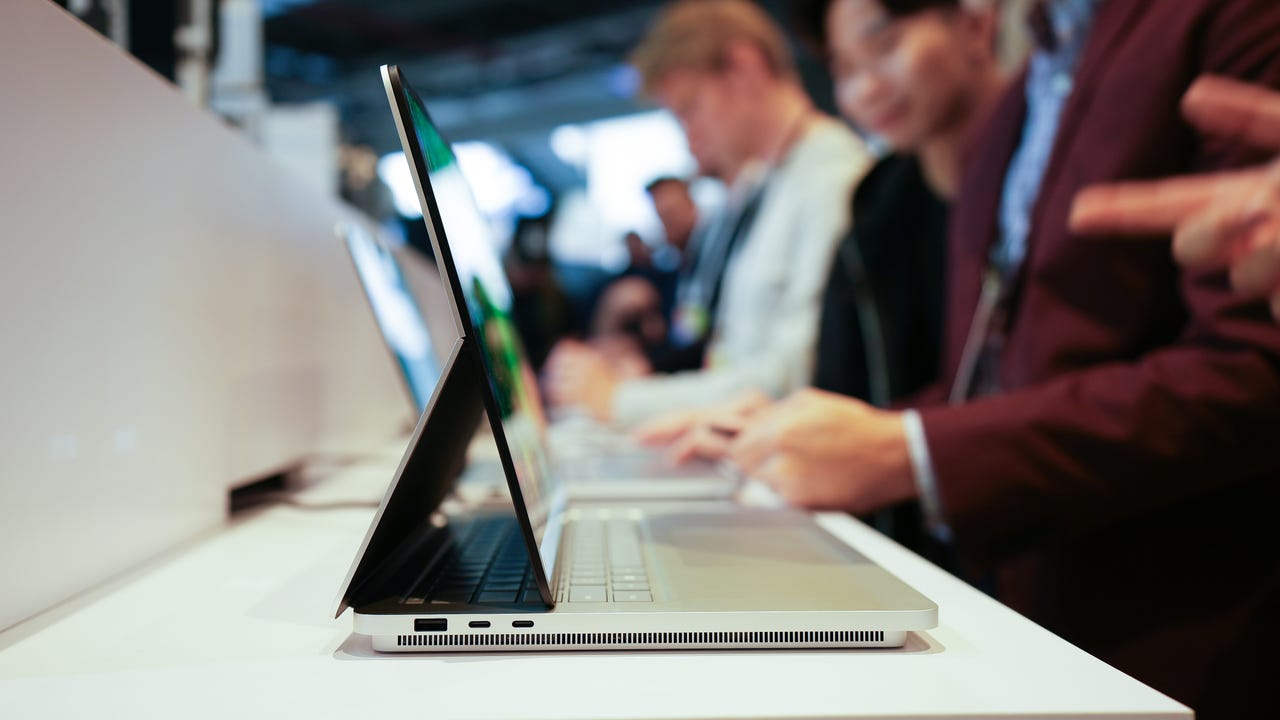
Microsoft is about to announce its next wave of Surface PCs, including two new models that will be powered by Arm-based processors. At Windows Central, Zac Bowden reports that the new Surface Pro 10 and Surface Laptop 6 will be unveiled at a Microsoft event on March 21, highlighting the company’s first AI PCs.
They will be the first Surface PCs to ship with new Intel Core Ultra and Qualcomm Snapdragon X Elite-based processors with next-gen NPUs (neural processing units) for enhanced AI performance.
Bowden’s sources tell him the machines will ship in two waves, with Intel-based models coming in April and the Arm-equipped versions arriving in June. And that’s a problem for Microsoft.
Last year I wrote about Microsoft’s efforts to move Windows to an Arm-based model, with an emphasis on “custom silicon to … ensure the competitiveness of the entire Windows ecosystem and Surface hardware.”
See also: Windows on Arm redux: Can Microsoft deliver a silicon surprise before year’s end?
As I noted then, “If they’re really serious about this custom silicon effort, they’d better pick up the pace.” Unfortunately, Microsoft’s historical reliance on investments and partnerships is a real handicap in terms of keeping up with Apple, which develops its own custom silicon for iPhones, iPads, and Macs in lockstep with the operating system developers.
Apple’s approach ties the silicon and the operating system together in a way that allows them to optimize for performance and battery life without the need to pay a third-party chip supplier (like Qualcomm or Intel).
That’s why Apple has been shipping third-generation Apple Silicon devices for months, while Microsoft is still months away from shipping its first Surface devices built using custom silicon. (The current Arm-powered Surface devices are based on slightly customized versions of Qualcomm processors but can’t really be considered “custom silicon.”)
In early 2023, Qualcomm had optimistically forecast that it would be shipping devices based on the next-generation SoC that was eventually branded as the Snapdragon X Elite. That obviously didn’t happen, which is why those new Arm-based Surface PCs won’t be here for several more months. That gives Apple three or four months to sell its brand-new M3 MacBook Airs without the competition that the new Surface Pro 10 and Surface Laptop 6 might provide.
The biggest advantage of the Arm architecture, of course, is its power efficiency. Existing Arm-based Surface models are thin and light and get vastly better battery life than their Intel-based rivals, without generating heat and requiring fans. (My first-generation Surface Pro X, for example, averaged well over 8 hours of real-world battery usage per charge.) The trouble is those numbers are hours less than, say, a MacBook Air with an M2 or M3 processor. And Apple’s laptops blow the doors off their Surface rivals for more demanding tasks.
Also: The best laptops of 2024: Expert tested and reviewed
Bowden’s sources tell Windows Central that “these new chips will enable huge performance and efficiency gains over previous Surface Pro and Surface Laptop models.” They’d better.
In fact, if Microsoft wants the market to take these new devices seriously, it has to deliver huge improvements in performance and battery life over its current models, and it has to be competitive with what Apple is shipping today.
Most importantly, those Surface devices have to be good enough to convince other PC OEMs to begin the big shift to an Arm-based model and away from the classic Intel architecture.
It’s no accident that these new devices are being touted as purpose-built for AI, with neural processing units that can shift demanding AI workloads away from the GPU, as well as a Copilot key that hops straight into Windows 11’s AI features.
See also: What is an AI PC? (And should you buy one?)
A few months ago, it seemed like a sure bet that Microsoft would release Windows 12 this year. I think we’ll probably still see preview releases before the end of 2024, but the official release might wait until next year. If so, that gives Apple another year to extend its lead in hardware and software.

